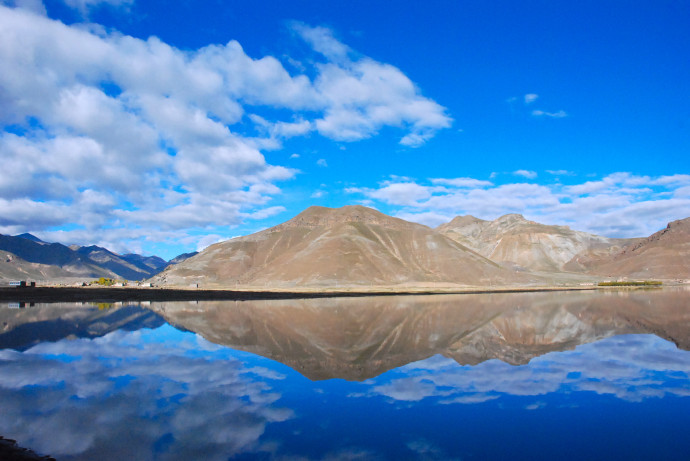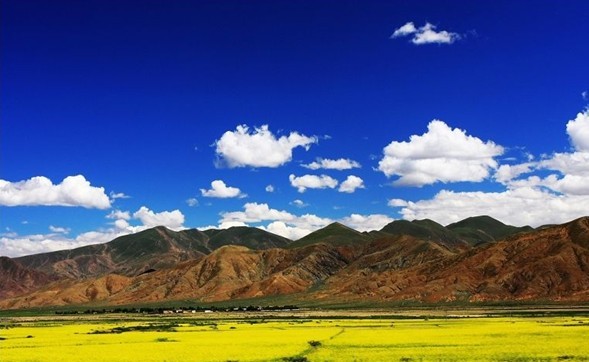The Tibetans have their own calendar, in which November 1st is their New Year. The Tibetan New Year is the most important festival in Tibet. Other main Tibetan festivals include the Shoton Festival, the Great Prayer Festival, the Butter Lamp Festival, the Saga Dawa Festival, the Gyangtse Horse-Race Festival, the Nakchu Horse-Race Festival, and the Yarlung Culture Festival.
The Potala Palace The Potala Palace
Tibetan Buddhist Festivals:
Losar: Losar or the Tibetan New Year holds immense significance in the lives of the local people. Infact, the importance of Losar is comparable to the Lunar New Year of the Han People or Christmas of the west. Preparation for this festival commences from the time the 12th month of Tibetan Calendar begins. Sacrifices are offered to deities and special occasion foods are cooked. On the New year's Eve, the Ghost Exorcising Festival is organised. Prior to this, during daytime, monasteries hold sorcerer's dances, people clean their houses and beautify them. All this is done with a belief that the cleaning will wards off evil spirits and bad luck. The Ghost Exorcising Festival itself sees the lighting up of torches and fireworks to frighten the ghosts. Family members walk on the road until the time they discover a crossroad from where they believe the ghost cannot return or find a way back to home. As the New Year arrives, butter lamps are prepared to be sacrificed along with grains. Further, good wishes are exchanged with neighbours and relatives. The celebration for the onset of New Tear continues till the end of the Great prayer Festival.
Monlam/ The Great Prayer Festival: Monlam or the Great Prayer Festival is the most important religious festival of the Tibetan people. Instituted by the founder of the Gelukpa sect in 1409, the festival commemorates the victory of Shakyamuni Buddha over six Brahmanical teachers. On this day, if the Dalai lama is present, he is welcomed by the Nechung oracle in trance enroute to the Main Cathedral. In his absence, however, the head of Ganden Monastery presides over the ceremony. The festival sees fierce debates on Buddhist scriptures by scholars and religious examination for learners. Devotees and disciples from all over the world come over to be part of the festival. The main attraction of the festival is the unfurling of a giant Buddha thangka. Furthermore, dramatic performances and dances are also seen in the festival. The festival concludes with ritual of expelling evil.
The festival date varies, for the three important Gelukpa monasteries - Sera, Drepung and Ganden -it is from 4th to 25th day of the 1st Tibetan month. For Taer, it is from 8th to 15th day of the 1st Tibetan month.

The Butter Lamp Festival: The Butter Lamp festival is the last day of the Great Prayer Festival and was first celebrated by an eminent patron of Tsohgkhapa, Lord of New Dzong in 1409. He lighted innumerable butter lamps to honour the victory of Buddha over non Buddhist opponents. In this festival, Tibetans assemble at the Barkhor Street in Lhasa and pray to Buddha during daytime. As the night falls, thousands of butter lamps are illuminated, songs are sung and dances performed throughout the night.
Saga Dawa Festival: Saga Dawa Festival is celebrated in 15th day of the 4th Tibetan month. It marks the day when Buddha Shakyamuni was conceived in the womb of his mother, Queen Mayadevi, gained victory over demons (35 years later) and gained complete enlightenment under Bodhi Tree (early 16th century). It is also said that on this day half a century later, Buddha passed into parinirvana, the ultimate state of peace, at Kushinagara. Princess Wencheng, too, is supposed to have arrived in Lhasa post her marriage to Tibetan king Songtsen Gampo on this day.

On this festival, the government offices of Lhasa remain close. Sutras are recited and sacred chham dances performed in almost every monastery. Individually, people participate in circumambulation of Lhasa city and spend their afternoon on picnic at "Dzongyab Lukhang" park at the foot of Potala. Performance by folk artists that pay respect to Buddha are also organised. Lastly, since it is believed that good deeds performed in this month deserves 300 fold in return, many people generously dontae money, food and other items to monasteries and beggars.
Shoton Festival: One of the most important festivals in Tibet, Shoton means the Yoghurt festival. In earlier times, lamas locked themselves up in the monastery and pious people went into mountain hermitage perform penance. When they came out of their seclusion, local people served them yoghurt and danced to welcome them back. The opera performance, which is a major attraction today, was introduced for the first time in the 17th century. At that point of time, it was celebrated around monasteries and in Lhasa and Drepung Monastery, however the beginning of the 18th century saw the celebration shifting to Norbulingka. Popular fairs also form part of the festival. Because of the opera performance, the festival is also known by the name of Tibetan Opera Festival. In Drepung Monastery, a giant thangka of Buddha is unveiled during this festival which draws a whole lot of crowd.
The Bathing Festival: This festival is celebrated for a week, from 6th to 12th day of the 7th lunar month. The bathing Festival has its origin in a legend as per which Avalokitesvara, one of the Buddhist deities, filled in the Tibetan rivers with holy water so as to eradicate a pestilence. A suffering person was instantly cured the moment he took a bath in the holy water. The custom of bathing in the river water passed on from one generation to the other till the time it became a festival. Today, a whole lot of Tibetans take a dip into the river water believing that it will not only clean the body bur also cure away any disease. It is also believed that the sacred planet Venus appears in the sky during this time and fills the river water with curative powers.
|
